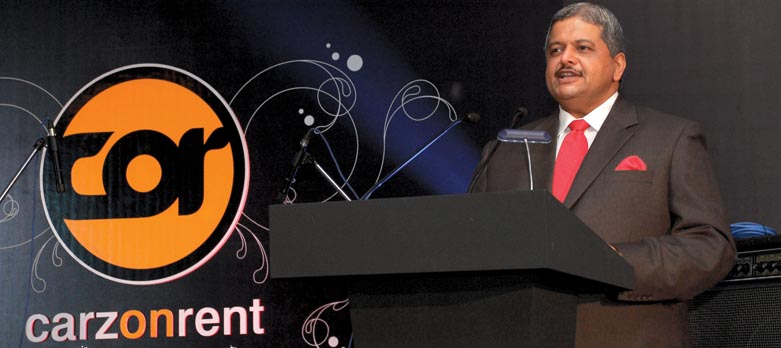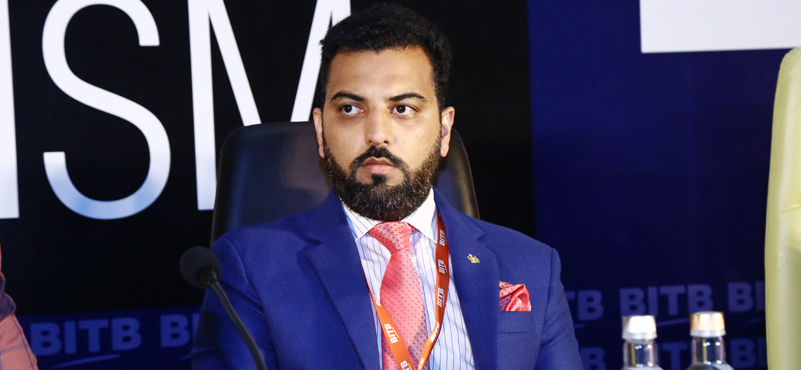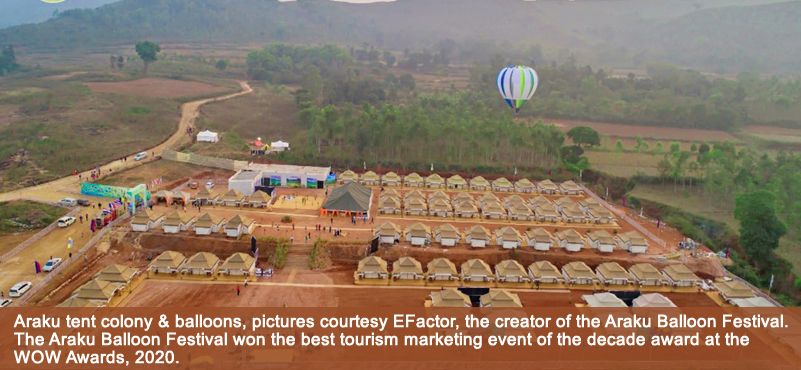The Indian car rental market has come a long way since 2000 with the entry of a host of domestic and international players in the fray each trying to push the envelope. Those were the days when the largest player in the market probably had a fleet of 400-500 cars. But the scene has dramatically changed since then. Now the leaders of the pack comprising around 25 players in the organised segment have a commendable fleet size – around 8,000-9,000. On a cumulative basis, the organised players have a market share of 10 percent in the 8,000,00 car market which is believed to be generating a staggering revenue of $9 billion annually.
But if the words of Rajiv Vij, MD & CEO, Carzonrent (one of the first movers in the segment who is often referred as “czar of car rental business in India”) are to be believed, this could just be an interlude stage in the journey of the business. With demand on a consistent rise, the players in the organised camp have a golden opportunity to significantly corner a greater share of the expanding pie. Plus, much on the lines of the matured markets, car rental business will go beyond the plain, vanilla mode and new practices like ride sharing or self-drive products will increasingly become more popular for which organised players are probably better prepared. In an exclusive conversation with TourismFirst, Vij explains the rapid fire churnings (both quantitative as well as qualitative) expected in the vertical in next five years which may dramatically change the complexion of the car rental business in the country:
Please take me through briefly to Carzonrent’s journey since its inception. You were one of the first movers in this segment. What really propelled you to take a plunge in a business which did not have a concrete structure around 2000 when you had started?
In the early part of my career, I was working with Hindustan Motors selling the cars. The good, old Ambassador was mostly sold to taxi operators. That gave me the opportunity to closely examine what actually works for these taxi operators particularly how they usually climb the value chain, from a taxi driver to an owner. After that I joined International Travel House, an ITC company. While I worked on all the businesses of travel house including the corporate travel, I somewhere felt that in this business a lot is going to happen in the next 10-20 years in India. I also met the senior officials of a lot of global car rental companies and studied how these companies have grown up in different markets all over the world. For instance, their growth has been closely linked with the developments in the aviation and tourism sectors in specific markets. And in 2000 I floated this company since I wanted to explore the opportunity.
When we started Carzonrent, we started focusing on the corporate B2B business. And our first few customers were in Delhi, Mumbai and Bangalore.
What was your fleet size initially…
We had 29 cars operating across three cities. But from day one, we were also doing some amount of aggregation, outsourcing additional cars from small operators. We were doing a business of something around `30 lakh per month during the initial phase.
Our business got a major boost when we became licensee for Hertz within six months of starting our business and then for the next seven years, we operated as their franchise. But the company cars on rent is something which we always owned and that is how we started. We got into hotel services in 2003, by bagging contracts from a lot of hotels – Taj, Hyatt, J W Marriott, etc. We became the first car rental company in 2005 in India to raise PE funding when we received $2 million from Citi Ventures. In 2006, we again picked up PE funding from Sequoia Capital amounting $6 million and our third funding in 2010 got us $8 million. In 2006, we also expanded into radio taxi business when we launched Easycab. The same year, we also launched our operating lease business under the Carzonrent brand. In 2007-08, when airports started privatising and getting refurbished, we got into a tie-up them and today we operate at 10 airports across India which is primarily B2C business. In 2014, we decided to sell off our car leasing business to Sumitomo Corporation. But we have also made some serious acquisitions – Q cabs in 2011 and recently we have bought Ridingo. Meanwhile, a major product which we launched in 2013, November was Myles meant to promote self-drive business. And this has grown quite significantly. Today, we are the only car rental company in India that offers car with or without driver. We offer cars starting from an electric Reva car to a Mercedes S class or BMW 7 series cars. And in between, all the car models which are there in the market. In fact, in our self drive fleet, we have 33 car models that we offer to our customers in 21 cities across India.
So the broader approach has been to have a right mix of B2B (business traveller) and B2C customers (the leisure and individual traveller). We service customers who come from overseas to India. And we also have a tie up with a European conglomerate through which we offer car rentals to anybody from India going abroad in 151 countries in the world.
So in a statistical sense, how will you explain the size of the company right now.
Today we run about 8000 cars nationally. We operate from 39 cities and have our operations in the city locations, at airport locations, hotels, etc. Even in the self-drive segment, we have created multiple pick up and drop locations. We now roughly generate a revenue of Rs 30 crore per month.
Anybody reading about your company on the internet or elsewhere for the first time may get an impression that you are pursuing an asset heavy model which is something not many advise these days in any specific service sector. I am quite curious to know what is the reality? You can’t surely own all the cars which comprise your fleet.
There is a lot of talk about asset heavy and asset light model these days which have primarily been flouted by the new players who have jumped on the bandwagon. But you see out of our 8000 cars, we own less than 2000 cars. So 75 percent of our business is already in the asset light category. Secondly, even out of these 2000 cars, about 1800 cars have been given to our drivers under a driver entrepreneurship programme. Under this programme, the drivers have paid 10 percent of the value of the car to us upfront. And then the driver is responsible for fuel, maintenance, etc. And he pays us a fixed amount on a daily basis. So out of the 8000 cars, what belongs to us is not even 2.5 percent of the total fleet.
You started in 2000 and since then other players both domestic and leading international car rental firms also jumped on the bandwagon and became aggressive in their own way. Has this business seen its best growth spell in the last 10-15 years? You were coming from nowhere, started with a zero base and, therefore, given the rise in demand in car rentals, the growth of the industry must have been phenomenal.
There is no doubt that this is a high growth industry. This is also an industry where 15 years back, the biggest player in the fray had a fleet of 400 cars. And from that stage to now where leading players like us can claim to have 8,000-10,000 cars in our fleet is a huge change. As an entrepreneur, I am pretty satisfied with what I have achieved. Your question now is: has this industry reached its peak? No, it has not. It is still at a nascent stage. My belief is that in the next five years, we will have a fleet of 1,00,000 cars.
So are you saying that you are inching close to your possible best spell for which players in your segment have been working for the last 10-15 years?
I am saying that we will continue to move forward and this business has the potential to not only build volumes but also gives us the opportunity to take our business, our brands to the overseas markets. This is something which we will definitely do in the medium-run. We believe that Myles which is our self-drive brand and which also offers car sharing has massive potential. It is a business which is going to make people decide whether they should buy car or not. Because we will offer them cars across different categories across.
From your response, I am getting the feeling as if somebody is advising me not to buy a house but rather stay in a rented accommodation since buying could mean bulk capital expenditure…
Absolutely. The whole world today is moving to a shared economy – multiple users of a house or multiple users of a car. This culture will eventually get strong in India as well.
When it comes to Indian car rental market size, there are varying estimates. Let me ask you, what could be the realistic number? Is there any authentic study?
There are various studies which different agencies have done. These studies are done on the basis of the total volume of registered commercial vehicles analysing their average lifespan and average revenue generation potential. One such study earmarks the total number of cars operating in this industry to the tune of about 8,00,000. And they roughly generate about $9 billion revenue annually. The organised segment though is still small. There are about 20-25 companies like ours operating in this segment and our cumulative share would not be more than 10 percent. And that is why I say, there is a huge opportunity for us to grow.
Can I ask you, of the total revenue which you generate – what is the ratio between your B2B and B2C verticals?
It is almost equal. In precise terms, it is 53 percent from B2C and 47 percent from B2B.
Let me now draw your attention to another element. You spoke about your corporate clients and tie up with hotels and airports. How much does tourism directly figure in your strategic planning?
A lot, I would say. There is a distinctive feature of the relationship between car rental companies and tourists globally. They like self drive facility which is a major problem that India has since cars are provided with drivers. So our entry into the leisure business where we launched Myles is to align with the aspiration of that traffic, give them the self-drive experience in India. A lot of people (both foreign and domestic) are taking our cars to visit Rajasthan, Kerala, Goa, Ladhak, etc. We are incidentally also the largest owner of the Mercedes cars in India. These luxury cars are used by a lot of people who want to travel within India on a holiday because they are very comfortable in them and they are mostly FITs. And why are we sitting at the airports? We are at the airports to service the tourists who are landing there. We want to provide safe, comfortable and reliable service to the tourists who are landing in India. This is a critical part of our business and tourism is a key part of our strategy.
What could be the percentage contribution of this leisure segment to your business?
Our B2B is 47 and B2C is 53 percent. One way to respond to your question would be 53 percent of my business comes from leisure. But in realistic terms, out of this about 15 percent would be people travelling for business purposes. So the balance 30-35 percent is all leisure.
So you have reached to that stage wherein if any tourist is coming from any overseas market, you can completely take care of his on road movement once he lands here?
We have online platforms, booking tools, national reservation number, national command center, and national 24×7 helpline service. So we have put in those critical components of the back-end infrastructure which make sure that your booking, payment, confirmation processes are easy and you get reliable and safe services. We want all tourists using our service to go back with a good experience.
A few unpleasant incidents in the recent past have seen questions being raised about the safety and security standards which the car rental industry in general follows.
This is the most important issue. It is critical for every company to ensure compliance with the laws. In this industry, my understanding is that all the existing laws have the primary objective to deliver safety to the customers. At least I can speak for my company. We are following all the laws in terms of licensing, drivers’ authentication and verification (both private as well as by the police), checking his documents, putting GPS devices in all our cars and having a national command center where all our cars are tracked on a regular basis. We also spend a lot of money in training personnel who are part of our services’ pool.
I can understand a serious player like Carzonrent is taking all efforts to ensure that it maintains high safety and security standards. But there are players who are purely working on a marketplace model. And quite naturally, they do not seem to be interested in going beyond their intermediary role. Would you like to comment on this?
I would not like to comment on any individual player. The only thing I would say is: anybody who wants to operate in India also has to realise that this country has specific laws for this industry and they will have to comply with them.
Your Myles is being looked as a big innovation something that entails to bring in self-drive culture in the country. Is there something similar occupying your mindspace right now which you may unveil in the near to medium run?
Myles is a big part of our strategy going forward. But alongwith that after Ridingo’s acquisition, car sharing and ride sharing are also going to be very crucial for our future growth. As I said earlier, the shared economy concept will become more prominent going ahead.
That was on the product part. Do you also intend to fan out in more destinations including tourist hubs?
We are already present in some of the important tourist destinations in the country. Out of the 39 cities where we are present today, there are destinations like Jaipur, Udaipur, Jodhpur, Amritsar, Vizag, Bhuwaneshwar, etc. We have now reached to Kerala too. We certainly want to have strong presence in all leading tourist destinations in the country.
One final point. You said that this industry is now inching close to its best spell. How do you envisage the unfolding scenario both for the industry and your own company in the next five years?
It will be a very positive scenario for the industry in general. The growth will be robust, some serious consolidation will happen, some big brands will emerge from India which would also start operating in the international markets, and some of these leading players will have a fleet size of 50,000-1,00,000 cars. The organised segment which is presently around 10 percent will probably jump to 40-45 percent in the next five years. As far as we are concerned, we aim to become 1,00,000 cars company by 2020. And we expect to have an annual revenue flow in the range of Rs 5000 crore. We will also take some of our products to overseas markets.
Have you identified the markets where you would like to make your international foray?
We are firming up plans and it will not happen in next one year. But whenever it happens, those will be important markets. I have no intention of entering into any low profile market and say we are an international company now. We will enter into the markets which want the best products which car rental industry can offer.
By Ritwik Sinha




































